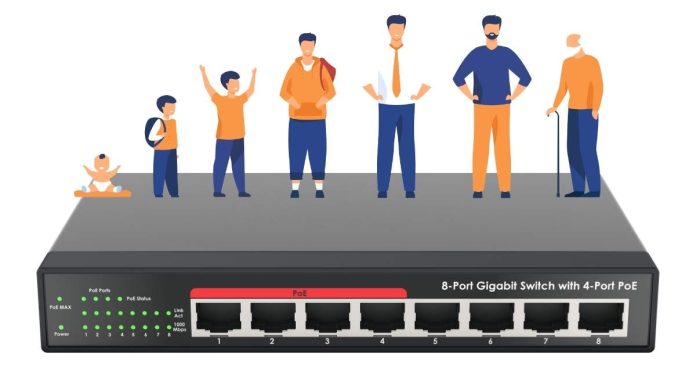A Switch Port Analyzer (SPAN) is a feature on network switches that allows network administrators to monitor network traffic by mirroring the traffic from one or more source ports or VLANs to a destination port. This feature is often used for troubleshooting, network analysis, and performance monitoring.
Here’s how it works:
- Source Ports/VLANs: These are the ports or VLANs on the switch where traffic is being captured. The source ports could be individual physical ports or a whole VLAN.
- Destination Port: This is the port where the mirrored traffic will be sent. This port typically connects to a network analyzer or monitoring device (such as a network probe or intrusion detection system) to capture and analyze the data.
- Traffic Mirroring: The switch forwards a copy of the network traffic (inbound and outbound) from the source port or VLAN to the destination port. This allows the monitoring tool to see all the traffic that is passing through the source port(s) without affecting the original traffic flow.
Common Use Cases:
- Troubleshooting: SPAN is commonly used when there are network issues that need investigation, such as packet loss or high latency.
- Performance Monitoring: It enables continuous traffic monitoring to identify potential bottlenecks, inefficiencies, or unauthorized activities.
- Security Analysis: Network administrators can capture all traffic to detect malicious activities such as denial of service (DoS) attacks or unauthorized access attempts.
Types of SPAN:
- Local SPAN: The monitoring is performed within a single switch, where traffic from specific ports or VLANs is mirrored to another port on the same switch.
- Remote SPAN (RSPAN): This allows traffic from a source port on one switch to be sent to a destination port on a different switch over the network, enabling distributed monitoring.
- ERSPAN: Enhanced RSPAN is a more advanced version that can encapsulate mirrored traffic into IP packets, making it possible to send SPAN traffic over Layer 3 networks.
Configuration Example (Cisco Switch):
# Define SPAN session on a Cisco switch
monitor session 1 source interface Gi0/1
monitor session 1 destination interface Gi0/2
This configuration mirrors traffic from port GigabitEthernet0/1 to GigabitEthernet0/2 for monitoring purposes.
Important Considerations:
- Impact on Performance: Excessive use of SPAN can affect switch performance, particularly on high-throughput switches, since it increases the amount of data being processed.
- Port Limits: Some switches have limits on the number of source and destination ports that can be configured in a SPAN session.
- Data Loss: If the destination port is overwhelmed (e.g., the monitoring tool can’t keep up with the traffic), packets may be dropped.
In summary, SPAN is a powerful and flexible tool for monitoring and analyzing network traffic, aiding in network management and troubleshooting.


